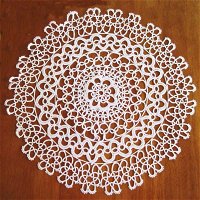
A Time to Sew Trivia Quiz
Sewing is basically the craft of fastening or attaching objects using stitches made with a sewing needle and thread. This quiz investigates some of these, and related textile arts.
by Midget40.
Estimated time: 3 mins.
- Home
- »
- Quizzes
- »
- Hobbies Trivia
- »
- Needlework









